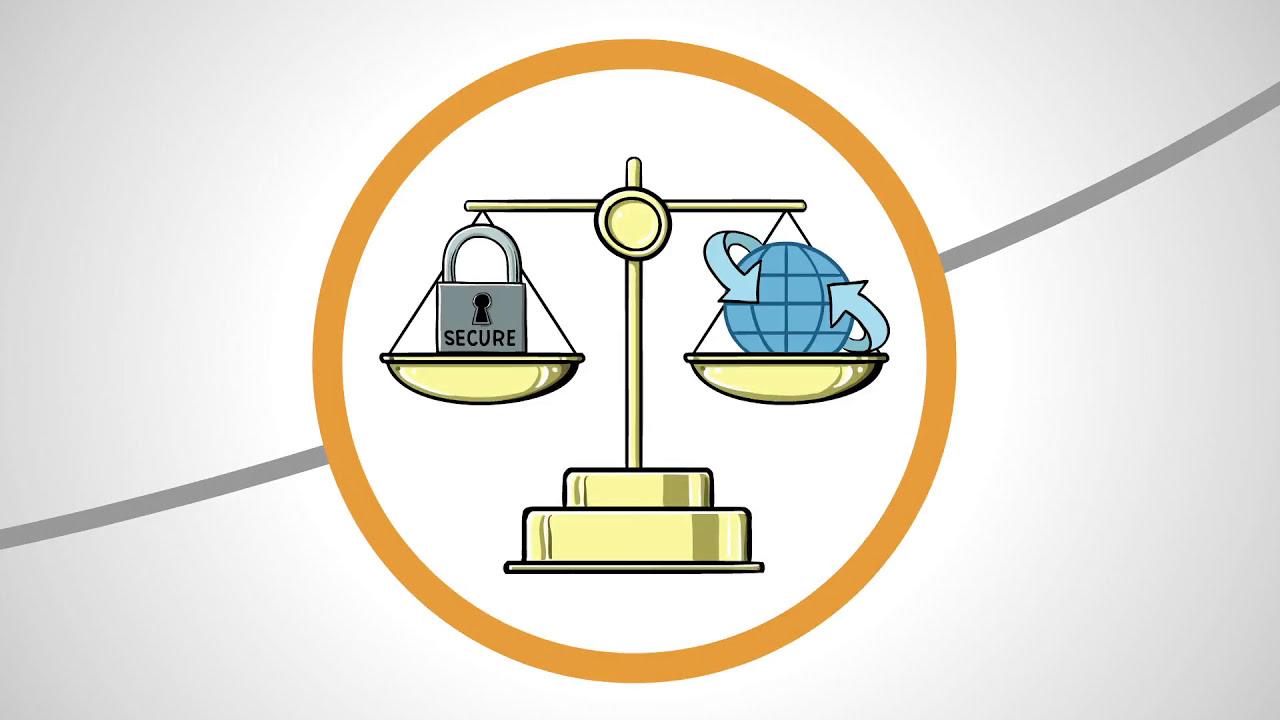Table of Contents
- Understanding Patient Consent and Its Role in Health Care Privacy
- Navigating Data Security Measures for Health Care Organizations
- The Importance of Staff Training in Protecting Health Care Information
- Balancing Innovation and Privacy: Best Practices for Technology Implementation
- Legal Frameworks and Compliance: Staying Informed in a Changing Landscape
- Q&A
- Future Outlook
Understanding Patient Consent and Its Role in Health Care Privacy
In health care, patient consent acts as a foundational pillar for establishing trust between patients and providers. When patients grant consent, they are not only acknowledging their understanding of the treatment or procedure but are also empowering providers to handle their personal information responsibly. This proactive engagement fosters a sense of ownership over one’s own health decisions, reinforcing the ethical obligation providers have in safeguarding sensitive data.
Maintaining health care privacy requires a multifaceted approach, and informed consent plays a crucial role in this process. Patients must be clearly informed about:
- What information is being collected
- How this information will be used
- Who will have access to their data
- Their rights regarding data retrieval and deletion
When patients are well-informed, they can make better decisions regarding their care while also understanding the implications of sharing their data. This two-way communication not only complies with legal requirements but also ensures that practices respect the patient’s wishes and autonomy.
To compare various forms of consent and their implications, consider the following table:
| Type of Consent | Description | Advantages |
|---|---|---|
| Informed Consent | Explicit permission granted by the patient after being fully informed. |
|
| Implied Consent | Assumed consent through a patient’s action, such as receiving treatment. |
|
| Explicit Consent | Clear agreement through written or verbal acknowledgment. |
|
Understanding these types of consent not only clarifies their significance but also helps to navigate the complexities of health care privacy effectively. Ultimately, informed consent is not just a legal formality; it is an integral component of ethical health care practice that safeguards patient rights while enhancing the quality of care.


Navigating Data Security Measures for Health Care Organizations
In an era where cyber threats are increasingly sophisticated, health care organizations must adopt comprehensive data security measures to protect sensitive patient information. One of the primary approaches is employing encryption techniques, which safeguard data in transit and at rest. By transforming readable data into an unreadable format, encryption ensures that unauthorized individuals cannot access patient records, thus maintaining confidentiality. Additionally, multi-factor authentication (MFA) plays a vital role in enhancing access control, requiring users to provide multiple forms of verification before granting access to sensitive systems.
Furthermore, fostering a culture of data security among employees is crucial. Regular training programs can significantly reduce the risk of human error, which is a common vulnerability in health care organizations. Topics should include recognizing phishing attempts, understanding compliance regulations like HIPAA, and practicing safe data handling protocols. Implementing monitoring and auditing systems can also help detect breaches early, allowing organizations to respond swiftly and effectively. Below is a simple overview of recommended security policies for health care staff:
| Policy | Description |
|---|---|
| Data Access Control | Limit access to sensitive data based on user roles. |
| Regular Password Updates | Require changing passwords every 90 days. |
| Incident Response Plan | Establish a clear protocol for data breach responses. |
Ultimately, the integration of advanced technology and strategic policies creates a robust defense against potential data breaches. Adopting firewalls, antivirus software, and intrusion detection systems forms a crucial first line of defense against unauthorized access. Regular risk assessments are also essential, as they help identify weaknesses in the current system and inform necessary improvements. By implementing these multifaceted security measures, health care organizations can not only comply with regulations but also instill confidence in patients regarding the safety of their personal health information.


The Importance of Staff Training in Protecting Health Care Information
Staff training is a critical pillar in the safeguarding of health care information. Without comprehensive training programs, employees may be unaware of the various threats and vulnerabilities that can jeopardize patient privacy. Regular training sessions help staff understand the significance of maintaining confidentiality and the potential consequences of data breaches, which can include financial penalties and the loss of trust from patients. As a result, a well-educated workforce is less likely to make mistakes that could lead to security breaches.
Effective training should cover essential topics such as:
- Data Encryption: Understanding how encryption protects sensitive data.
- Access Controls: Knowing who can access patient records and under what circumstances.
- Incident Response: Identifying steps to take in case of a suspected privacy breach.
- Regulatory Compliance: Familiarity with laws such as HIPAA and GDPR that govern health care privacy.
Moreover, establishing a culture of privacy within the organization can greatly enhance the effectiveness of training initiatives. When leadership prioritizes health care privacy, it sets a standard for all employees to follow. This can be reinforced through:
| Strategies for Fostering a Culture of Privacy | Benefits |
|---|---|
| Regular Workshops | Keeps staff updated on the latest security practices. |
| Open Communication Channels | Encourages reporting of suspicious activities without fear of retribution. |
| Role-Playing Scenarios | Helps staff practice responses to potential data breaches. |
investing time and resources into staff training is not merely an administrative task; it is a vital strategy to protect health care information. By equipping employees with the knowledge and skills necessary to maintain privacy, health care organizations can significantly reduce the risk of data breaches and build a more trustworthy relationship with their patients.


Balancing Innovation and Privacy: Best Practices for Technology Implementation
As technology rapidly evolves, organizations in the healthcare sector face the critical challenge of balancing advancement with the imperative of protecting patient privacy. Implementing innovative solutions—such as telehealth services, electronic health records, and AI-driven diagnostics—can enhance care delivery but also brings heightened risks to sensitive patient information. To navigate this landscape, healthcare providers must adopt best practices that ensure robust security measures while fostering an environment conducive to innovation.
To effectively manage this balance, consider the following strategies:
- Data Minimization: Collect only the data necessary for specific purposes, thereby reducing vulnerability.
- Encryption Standards: Implement strong encryption methods to protect data at rest and in transit.
- Employee Training: Regular training on cybersecurity and privacy policies ensures that staff remain vigilant against potential breaches.
- Regular Audits: Conduct periodic audits of technology systems and practices to identify and rectify vulnerabilities.
A proactive approach to technology implementation involves not only strategic planning but also incorporating privacy by design principles. By integrating privacy considerations into technology processes—from initial design phases to deployment—healthcare organizations can create a foundation of trust with patients. Additionally, transparency in how patient data is used and shared fosters a culture of accountability, allowing organizations to innovate responsibly while respecting privacy standards. Here is a glimpse of recommended practices:
| Practice | Description |
|---|---|
| Informed Consent | Clearly communicate data usage policies to patients for informed consent. |
| Access Controls | Establish role-based access controls to limit data exposure. |
| Third-Party Risk Management | Assess the privacy practices of any third-party vendors before integration. |


Legal Frameworks and Compliance: Staying Informed in a Changing Landscape
In today’s healthcare environment, staying abreast of the evolving legal frameworks and compliance requirements is not just beneficial—it’s essential. With laws and regulations frequently updated to align with technological advancements and societal needs, healthcare organizations must prioritize ongoing education. This entails familiarizing themselves with key legislation such as HIPAA, HITECH, and emerging state-specific regulations that dictate the handling of personal health information.
To support compliance, facilities often implement comprehensive training programs to ensure that employees understand their responsibilities regarding patient privacy. An effective compliance strategy should include:
- Regular Training Sessions: Keep all staff updated on policy changes.
- Audits and Assessments: Routine evaluations to identify non-compliance risks.
- Clear Communication Channels: Foster an environment where employees can seek guidance.
Moreover, utilizing technology plays a significant role in maintaining compliance. Many healthcare entities are now adopting electronic health record (EHR) systems that not only streamline operations but also enhance security measures. By partnering with IT vendors who specialize in healthcare compliance, organizations can ensure that they are equipped with the necessary safeguards against breaches. Here’s a quick overview of essential technologies that support compliance:
| Technology | Purpose |
|---|---|
| Encryption Software | Protect personal health information during transmission. |
| Access Control Systems | Manage who can access sensitive information. |
| Auditing Tools | Monitor and report on data access and usage. |
Q&A
Q&A: Health Care Privacy Part 2
Q1: What are the main principles of health care privacy? A1: Health care privacy is underpinned by several key principles, primarily the confidentiality of patient information, informed consent, and data protection. Confidentiality ensures that patient records are kept secure and shared only with authorized individuals. Informed consent means that patients should understand what information is being collected, how it will be used, and who will have access to it. Data protection emphasizes the implementation of measures to safeguard patient data from unauthorized access, breaches, or leaks.Q2: How has technology impacted health care privacy? A2: Technology has significantly changed the landscape of health care privacy, offering both challenges and opportunities. On one hand, electronic health records (EHRs) and telemedicine services can enhance patient care and streamline information sharing. However, they also present risks, as data breaches can be catastrophic. Health care providers must implement strong cybersecurity measures and regularly train staff on privacy protocols to mitigate these risks.
Q3: What role do patients play in maintaining their own health care privacy? A3: Patients play a crucial role in maintaining their health care privacy. They should actively review their medical records, be mindful of the information they share, and understand their rights regarding data access and sharing. Engaging in conversations with health care providers about how their data will be used is essential. Patients should also utilize secure communication methods when discussing sensitive issues, especially in a digital context.
Q4: What are the legal frameworks governing health care privacy? A4: Several laws and regulations govern health care privacy, with the Health Insurance Portability and Accountability Act (HIPAA) being one of the most significant in the United States. HIPAA sets national standards for protecting sensitive patient information. Additionally, regional laws, such as the General Data Protection Regulation (GDPR) in Europe, provide guidelines for data protection and privacy rights. Health care organizations must comply with these regulations to avoid substantial penalties and ensure patient trust.
Q5: What should patients do if they suspect their health care privacy has been compromised? A5: If patients suspect that their health care privacy has been compromised, they should take immediate action. First, they should contact their health care provider to report the incident and seek clarification on what information may have been exposed. Patients can also file a complaint with the Office for Civil Rights (OCR) in the U.S. or the relevant data protection authority in their area. It’s vital to monitor financial statements and credit reports for any signs of identity theft and consider enrolling in credit monitoring services as a precaution.
Q6: Are there emerging trends in health care privacy that patients should be aware of? A6: Yes, several emerging trends are shaping health care privacy. Increased use of artificial intelligence and data analytics in health care is providing new avenues for personalized care but also raises concerns about data usage transparency. Additionally, the rising trend of patient-generated health data from wearables and health apps is influencing privacy discussions. Patients should stay informed about new technologies and advocate for transparency in how their health information is handled. — This Q&A aims to clarify the evolving nature of health care privacy, spotlighting its complexities and emphasizing the collective responsibility of patients and providers in safeguarding sensitive information.




0 Comments